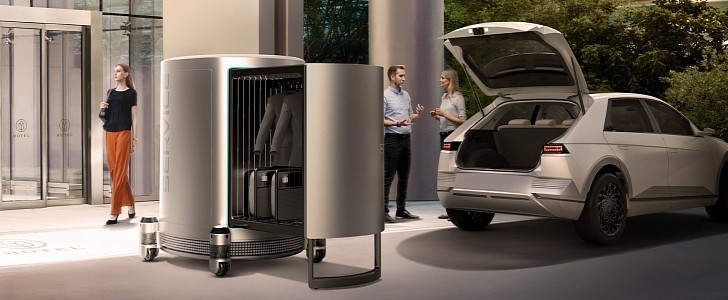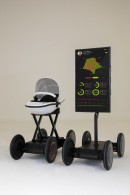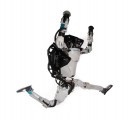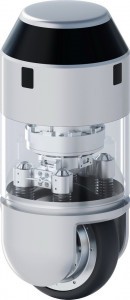Hyundai has unveiled a Plug & Drive (PnD) modular platform, enabling mobility for a wide range of inanimate objects, from all things small to large community spaces. The carmaker also presented a shared vision for robotics at CES 2022, alongside partner Boston Dynamics.
The PnD modular platform combines intelligent steering, braking, in-wheel electric drive and suspension hardware, with everything neatly packaged together. The steering wheel unit can turn 360 degrees thanks to an actuator that allows for infinite wheel rotation. In turn, this enables something called “holonomic movement,” - think figure skaters. Meanwhile, LiDAR and camera sensors allow the platform to move around autonomously.
“The PnD Module is adaptive and expandable to match human needs. Because in the world to come, you won’t move your things – they will move around you,” said Dong Jin Hyun, VP and head of Robotics at Hyundai. “PnD makes normally inanimate objects mobile. It’s this ability that makes changing practically any space possible. It’s a way to configure spaces on demand.”
According to Hyun, the module can be especially useful in office sharing, which is now a billion-dollar industry. The PnD could allow entire companies to modify and use workspace on demand. The platform’s flexibility can also individualize public transportation. For example, a personal mobility module could attach to a mother shuttle for most of its journey, before detaching for the last mile in order to take an occupant to their destination.
At CES, Hyundai exhibited a total of four application concept models using a PnD platform, including Personal Mobility, Service Mobility, Logistics Mobility and L7. The first one is a platform-based application fitted with four 5.5-inch PnD modules. It is configured to use space efficiently by applying a rotary opening and closing method.
Meanwhile, the Service Mobility and Logistic Mobility concepts use the same platform but with a storage space that opens and closes like a drawer. The former could be used for transporting luggage in hotels, while the latter could move goods from warehouses.
As for the L7 concept, it features a 12-inch enlarged PnD module, where the seat rotates so that the passengers can get off easily. It can also be operated freely with a joystick.
Another novelty presented by Hyundai at this year’s Consumer Electronics Show is the MobED (Mobile Eccentric Droid) small mobility platform, which can be used for service robots that can operate both indoors and outdoors. It packs a 2-kWh battery and can reach a maximum speed of 30 kph (18.6 mph).
The MobED and the PnD module were both exhibited alongside Boston Dynamics’ Spot and Atlas robots.
“The PnD Module is adaptive and expandable to match human needs. Because in the world to come, you won’t move your things – they will move around you,” said Dong Jin Hyun, VP and head of Robotics at Hyundai. “PnD makes normally inanimate objects mobile. It’s this ability that makes changing practically any space possible. It’s a way to configure spaces on demand.”
According to Hyun, the module can be especially useful in office sharing, which is now a billion-dollar industry. The PnD could allow entire companies to modify and use workspace on demand. The platform’s flexibility can also individualize public transportation. For example, a personal mobility module could attach to a mother shuttle for most of its journey, before detaching for the last mile in order to take an occupant to their destination.
At CES, Hyundai exhibited a total of four application concept models using a PnD platform, including Personal Mobility, Service Mobility, Logistics Mobility and L7. The first one is a platform-based application fitted with four 5.5-inch PnD modules. It is configured to use space efficiently by applying a rotary opening and closing method.
Meanwhile, the Service Mobility and Logistic Mobility concepts use the same platform but with a storage space that opens and closes like a drawer. The former could be used for transporting luggage in hotels, while the latter could move goods from warehouses.
As for the L7 concept, it features a 12-inch enlarged PnD module, where the seat rotates so that the passengers can get off easily. It can also be operated freely with a joystick.
Another novelty presented by Hyundai at this year’s Consumer Electronics Show is the MobED (Mobile Eccentric Droid) small mobility platform, which can be used for service robots that can operate both indoors and outdoors. It packs a 2-kWh battery and can reach a maximum speed of 30 kph (18.6 mph).
The MobED and the PnD module were both exhibited alongside Boston Dynamics’ Spot and Atlas robots.














